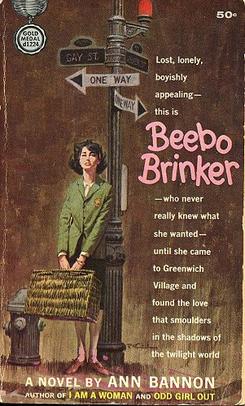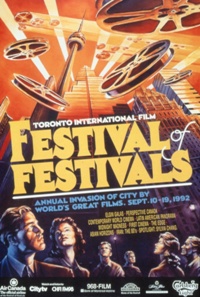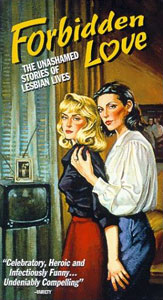
A lesbian is a homosexual woman or girl. The word is also used for women in relation to their sexual identity or sexual behavior, regardless of sexual orientation, or as an adjective to characterize or associate nouns with female homosexuality or same-sex attraction. The concept of "lesbian" to differentiate women with a shared sexual orientation evolved in the 20th century. Throughout history, women have not had the same freedom or independence as men to pursue homosexual relationships, but neither have they met the same harsh punishment as gay men in some societies. Instead, lesbian relationships have often been regarded as harmless, unless a participant attempts to assert privileges traditionally enjoyed by men. As a result, little in history was documented to give an accurate description of how female homosexuality was expressed. When early sexologists in the late 19th century began to categorize and describe homosexual behavior, hampered by a lack of knowledge about homosexuality or women's sexuality, they distinguished lesbians as women who did not adhere to female gender roles. They classified them as mentally ill—a designation which has been reversed since the late 20th century in the global scientific community.

Butch and femme are masculine (butch) or feminine (femme) identities in the lesbian subculture which have associated traits, behaviors, styles, self-perception, and so on. This concept has been called a "way to organize sexual relationships and gender and sexual identity". Butch–femme culture is not the sole form of a lesbian dyadic system, as there are many women in butch–butch and femme–femme relationships.

Jane Vance Rule was a Canadian-American writer of lesbian-themed works. Her first novel, Desert of the Heart, appeared in 1964, when gay activity was still a criminal offence. It turned Rule into a reluctant media celebrity, and brought her massive correspondence from women who had never dared explore lesbianism. Rule became an active anti-censorship campaigner, and served on the executive of the Writers' Union of Canada.

Lesbian pulp fiction is a genre of lesbian literature that refers to any mid-20th century paperback novel or pulp magazine with overtly lesbian themes and content. Lesbian pulp fiction was published in the 1950s and 1960s by many of the same paperback publishing houses as other genres of fiction, including westerns, romances, and detective fiction. Because very little other literature was available for and about lesbians at this time, quite often these books were the only reference the public had for modeling what lesbians were. English professor Stephanie Foote commented on the importance of lesbian pulp novels to the lesbian identity prior to the rise of organized feminism: "Pulps have been understood as signs of a secret history of readers, and they have been valued because they have been read. The more they are read, the more they are valued, and the more they are read, the closer the relationship between the very act of circulation and reading and the construction of a lesbian community becomes…. Characters use the reading of novels as a way to understand that they are not alone." Joan Nestle refers to lesbian pulp fiction as “survival literature.” Lesbian pulp fiction provided representation for lesbian identities, brought a surge of awareness to lesbians, and created space for lesbian organizing leading up to Stonewall.
Léa Pool C.M. is a Canadian and Swiss filmmaker who taught film at the Université du Québec à Montréal. She has directed several documentaries and feature films, many of which have won significant awards including the Prize of the Ecumenical Jury, and she was the first woman to win the prize for Best Film at the Quebec Cinema Awards. Pool's films often opposed stereotypes and refused to focus on heterosexual relations, preferring individuality.

Ann Weldy, better known by her pen name Ann Bannon, is an American author who, from 1957 to 1962, wrote six lesbian pulp fiction novels known as The Beebo Brinker Chronicles. The books' enduring popularity and impact on lesbian identity has earned her the title "Queen of Lesbian Pulp Fiction". Bannon was a young housewife trying to address her own issues of sexuality when she was inspired to write her first novel. Her subsequent books featured four characters who reappeared throughout the series, including her eponymous heroine, Beebo Brinker, who came to embody the archetype of a butch lesbian. The majority of her characters mirrored people she knew, but their stories reflected a life she did not feel she was able to live. Despite her traditional upbringing and role in married life, her novels defied conventions for romance stories and depictions of lesbians by addressing complex homosexual relationships.
Gerry Rogers is a Canadian documentary filmmaker and politician. She was leader of the Newfoundland and Labrador New Democratic Party from 2018 until 2019. She served in the Newfoundland and Labrador House of Assembly as NDP MHA for the electoral district of St. John’s Centre from 2011 to 2019. She became the party's leader after winning the April 2018 leadership election. She resigned as party leader prior to the 2019 provincial election and did not seek re-election.
Forbidden love may refer to:

I Am a Woman is a lesbian pulp fiction novel written in 1959 by Ann Bannon. It is the second in a series of pulp fiction novels that eventually came to be known as The Beebo Brinker Chronicles. It was originally published in 1959 by Gold Medal Books, again in 1983 by Naiad Press, and again in 2002 by Cleis Press.

Beebo Brinker is a lesbian pulp fiction novel written in 1962 by Ann Bannon. It is the last in a series of pulp fiction novels that eventually came to be known as The Beebo Brinker Chronicles. It was originally published in 1962 by Gold Medal Books, again in 1983 by Naiad Press, and again in 2001 by Cleis Press. Each edition was adorned with a different cover. Although this is the last in the series, it is set first — a prequel to the others. In the order of the series, it follows Journey to a Woman. However, in the order of the events and characters in the series, Beebo Brinker takes place several years before Odd Girl Out does.
The View from Here: Conversations with Gay and Lesbian Filmmakers is a book by Canadian film journalist Matthew Hays, published in 2007 by Arsenal Pulp Press.
Lynne Fernie is a Canadian filmmaker and interdisciplinary artist. She spent fourteen years as the Canadian Spectrum programmer for the Hot Docs Festival from 2002 to 2016, and was described as having a passion as "deep as her knowledge," and it was said that her "championing of Canadian documentaries and the people who make them has never wavered."
Aerlyn Weissman is a two-time Genie Award-winning Canadian documentary filmmaker and political activist on behalf of the lesbian community.

The 17th Toronto International Film Festival (TIFF) took place in Toronto, Ontario, Canada between September 10 and September 19, 1992. Léolo was selected as the opening film.
Five Feminist Minutes is a Canadian short film anthology released in 1990 by the National Film Board of Canada. The films were produced independently for the 15th anniversary of Studio D of the National Film Board of Canada in collaboration with Regards de Femmes and other NFB production studios in Canada.
Ruth Dworin is a feminist, women's activist, sound engineer, music producer and concert organizer based in Toronto, Canada. She is the owner of music production company Womynly Way Productions, an important contributor to the women's music scene in Toronto during the 1980s.
Zoe Dirse is a Canadian cinematographer, film director, writer and professor. She is best known for her cinematography work for Studio D under the National Film Board of Canada, the first government-funded film studio in the world dedicated to women filmmakers.

Studio D was the women's unit of the National Film Board of Canada (NFB) and the world's first publicly funded feminist filmmaking studio. In its 22-year history, it produced 134 films and won 3 Academy Awards. Cinema Canada once called it the "Jewel in the Crown Corporation."
Fiction and Other Truths: A Film About Jane Rule is a Canadian documentary film, directed by Lynne Fernie and Aerlyn Weissman and released in 1995. The film is a portrait of influential lesbian writer and anti-censorship activist Jane Rule.









